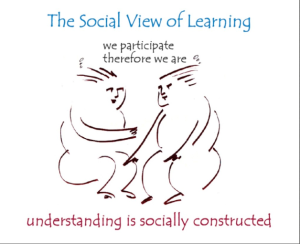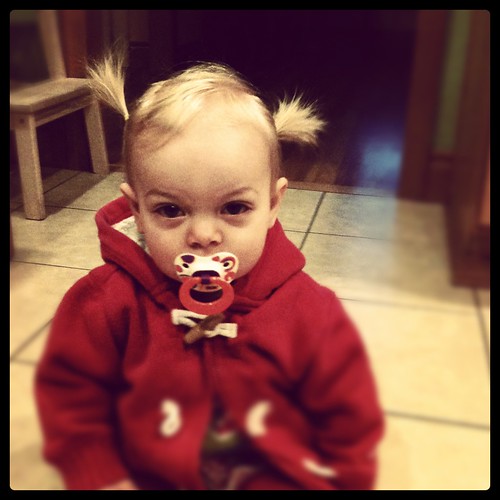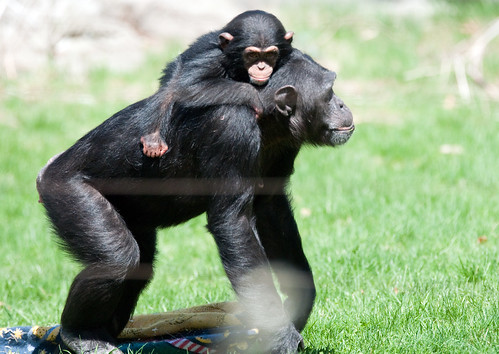When I first read the course assignments for #eci831 and read that I need to include pingbacks. I admit the first thing my brain thought of was pigtails.
I quickly realized we weren’t going to be spending our time learning how to style hair (unless of course you choose that as your learning project). My brain quickly jumped to the idea of a piggy back. Now the more I learn about a pingback the more I think that the visual image of a piggy back ride is not so far off. Sue Waters explains a pingback as including a link to another blogger in your post. (Just like that!)
How do I connect a pingback to a piggy back? Well when you are brainstorming we often “piggy back” off of an idea of what the person before us says. We add, modify or give an example of the idea that the person before us has suggested and deepen our understanding and perhaps create a new idea that solves the problem that lead to the brainstorming session.
I sent Alec Couros an email asking him about plagiarism and group discussions. Some of the text of the email is below:
I remember last year in a class I was taking we were put into groups to discuss our plans for our final project. People were really reluctant to share their ideas. Then we started to talk about why they were uncomfortable and it came back to the new online program that they had to take before they started their Master’s program about plagiarism. One of the things that someone in the group shared was that it was considered plagiarism to use an idea a group member shared in a discussion in your paper or project. I was in my Master’s program before the online course was implemented so I am not 100% sure of the accuracy of that statement.
It’s not accurate. If you cite where you got the idea from if it fact it is not your own idea, then it is definitely not plagiarism. I think most people are simply not confident enough about their ideas, or they think that they have nothing new to contribute. I often show them this:
I participated in a webinar hosted by The Daring Librarian where Sue Waters was presenting. One of the points that people at the webinar made was that you should never apologize for what you are blogging or how often you post. This reminded me of the blog post by Shauna Drackett where she questions if what she is blogging about is interesting enough and relevant? Shauna concludes that in her blogging all she can guarantee is the satisfaction of a completed blog post and the thinking that she has done to complete that post.
As I was thinking about education and the idea of how intellectual property and wondering if one person owns an idea or if all ideas are a reworking and built on ideas of those who came before us. I discuss some of these ideas in my own blog post Creativity, Play, Technology and FUN!
My email continues
If it is a true statement it opens up for me the idea of how education is changing to something much more collaborative and connected. I know that through this course I was intentionally looking for new/different content because I did not want to copy an article/idea that my peers had used. I think this might go back to the social constructed learning you were talking about. Oh. Might be an Ah-ha moment.
You may want to look at Stephen Johnson’s book titled, “Where Good Ideas Come From”. Here are quotes from the book. http://www.goodreads.com/work/quotes/12645873-where-good-ideas-come-from Also, here is a short video about the book.
After watching this short video clip I was curious about what Stephen Johnson had to say about ideas. I found a longer TED talk and I purchased his book.
I started to reflect on what Dr. Richard Schwier had said about communities and how a community is a community it doesn’t matter if you spend most of your time online or in person the core of the interactions and the connection with people is what creates the community. I then thought about what George Siemens‘ ideas about the relevance of higher education and what will happen as Open Education becomes more common place to universities as we know them today. What information will be considered relevant? Will the type of assignments and examinations that students complete be different? Will the research essay lose it relevance and be replaced with work that incorporates the classical theorist but is then used and adapted by students and scholars today to meet the needs of the 21st Century? As Stephen Johnson says in his video is this what we have been doing for centuries? With the inception of the internet we are able to connect faster and farther than ever before. We are able to brainstorm and piggy back (and pingback) on the ideas of minds of academics and the person you would meet in the coffee shop.
On the first night of #eci831 Alec showed us these two slides


When I first saw these slides I understood them and I thought I comprehended what socially constructed learning was. Now that I have experienced building knowledge socially through the blog hub and my Professional Learning Network (PLN) on Twitter I realize I have experienced the power of collaboration and being connected. Here is one concrete example
NEW POST: The Best Ways To Modify The Picture Word Inductive Model For ELLs http://t.co/ddS7Ar2XzT
— Larry Ferlazzo (@Larryferlazzo) November 8, 2013
This blog post gave me six new ways to use a teaching strategy I currently use in my classroom and make it better. I was able to have instant professional development that linked a current teaching practice with technology all before I had finished my morning cup of coffee. I realize my responsibility once I have tried these suggestions is to leave a comment on the blog post so that I can move forward the learning of others.
The pingback allows you to cite and acknowledge where an idea comes from and it also allows you a window into the conversation to make suggestions and build onto the ideas of others. I joined the Google + Connected Classroom Workshops the number of members and posts that arrive in my inbox is amazing. The desire to connect and be connected is strong and educators are finding ways to make those connections possible.
I think your idea still holds up. I believe that education IS changing to something much more collaborative and connected. I would love to hear more about your thoughts on this.
I hope this helps!
Alec
Thanks Alec, it does help, in fact it has begun to transform my teaching practices.
Related articles
- WordPress How To (Pingbacks) (bastetandsekhmet.wordpress.com)
- Whatever Happened To Pingbacks? (shkspr.mobi)
- The Importance of Plagiarism: Word Citing (english.answers.com)
- WordPress How To (Pingbacks) (greenembers.wordpress.com)
- Blogging How To (List of Pingbacks) (greenembers.wordpress.com)

